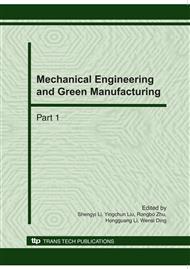p.1233
p.1238
p.1243
p.1248
p.1253
p.1258
p.1263
p.1269
p.1274
The Analysis of Energy and Environmental Efficiency Based on Input-Output Model
Abstract:
Input-output method can conveniently analyze energy consumption and environmental load for iron and steel enterprises. It can visually express production manufacturing statement and the consumption of energy and non-energy. Mathematical models are helpful for quantitative analysis and data handling. In addition, it’s useful to analyze main affected factors. Unit process energy consumption and steel ratio directly affect energy efficiency, which can be analyzed by e-p method.
Info:
Periodical:
Pages:
1253-1257
Citation:
Online since:
October 2010
Authors:
Keywords:
Price:
Сopyright:
© 2010 Trans Tech Publications Ltd. All Rights Reserved
Share:
Citation:


